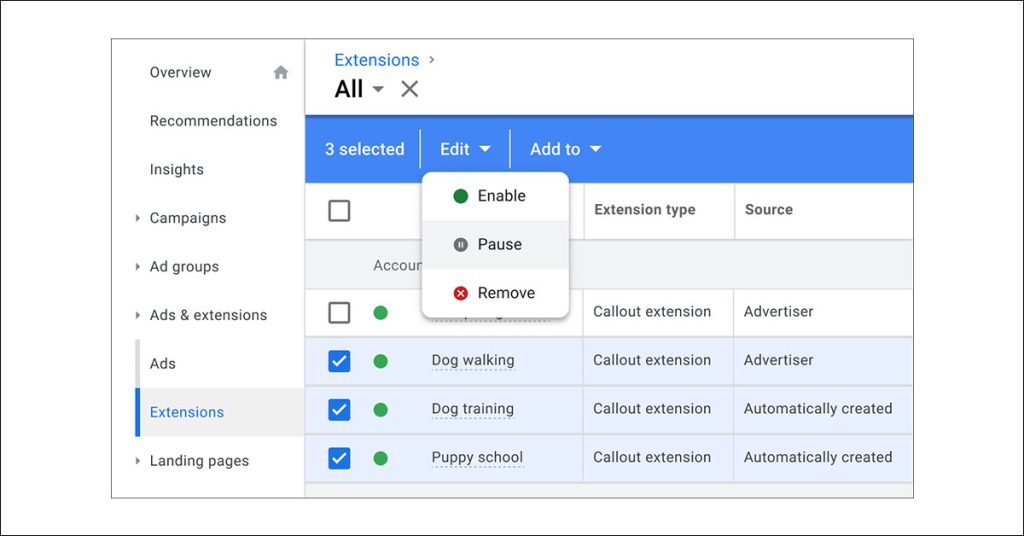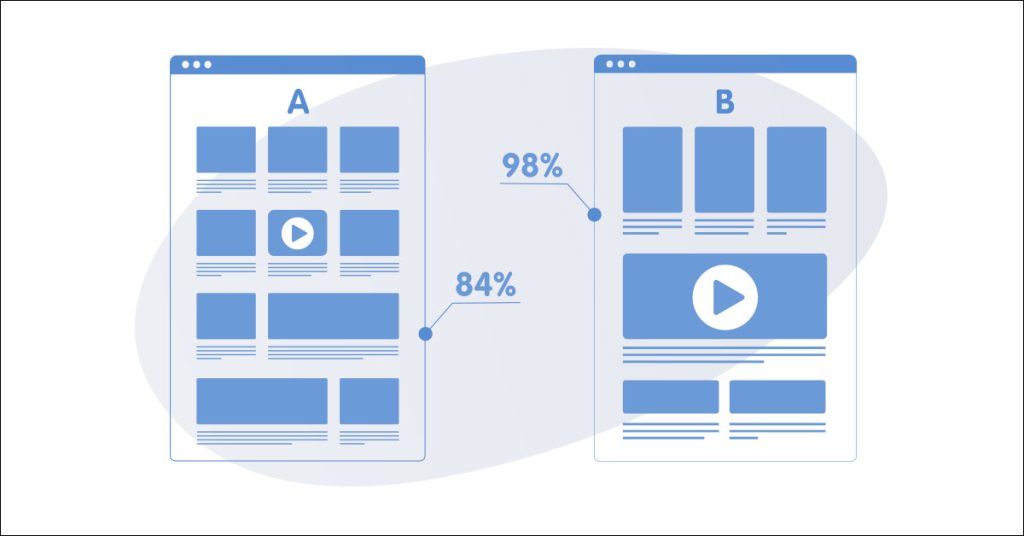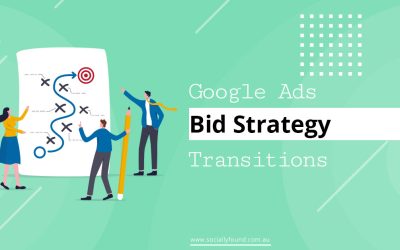Starting out with Google Ads can feel like jumping into the deep end of a swimming pool. It’s a vast and complex platform, with endless possibilities for targeting audiences, creating ad campaigns, tracking performance, and refining your strategy over time. But with the right approach and some strategic planning, you can achieve success in your Google Ads campaigns.

In this article, we’ll explore ten tips that will help you hit the ground running when it comes to making the most of your Google Ads venture.
Firstly, it’s important to start with clear goals in mind.
- What are you hoping to achieve through your Google Ads campaigns?
- Are you looking to increase website traffic or generate more leads?
- Are you focused on boosting sales or building brand awareness?
Having a clear understanding of your goals will guide every aspect of your campaign creation process from keyword research to ad copywriting so it’s essential that you take some time to define them before diving in.
Start with Clear Goals
Commencing a Google Ads campaign with established, measurable objectives is fundamental to attaining success in the initial stages. Small businesses with limited budgets must ensure that their ad campaigns are focused and results-driven.
Setting clear goals for a search campaign enables small businesses to measure the performance of their ads and make informed decisions about their future marketing efforts. When setting goals for a successful Google Ads campaign, small businesses should begin by identifying their target audience. Understanding who your ideal customer is will help you create relevant ads that resonate with them.
In addition, defining specific metrics for measuring the success of your ad campaign is crucial. For instance, you may want to track click-through rates (CTR), cost-per-click (CPC), or conversion rates. Tips for creating effective ads include using clear and concise language, highlighting unique selling propositions (USPs), and including strong calls-to-action (CTAs).
Small businesses need to ensure that their ads are visually appealing and stand out from competitors’ ads. By following these tips and techniques when starting out with Google Ads, small businesses can set themselves up for success in the highly competitive digital advertising landscape.
Perform Keyword Research
Conducting thorough research on relevant keywords is an essential step in developing a successful advertising campaign using Google Ads. Without proper keyword research, your ads may not reach the intended audience, resulting in lower impressions and conversions. Moreover, targeting irrelevant or low-traffic keywords can drain your budget quickly without yielding any results.
Google Keyword Planner is a useful tool for finding profitable keywords with high search volume and low competition. By entering specific search terms related to your business, it generates a list of potential keywords along with their average monthly searches and suggested bid prices. This information helps you make informed decisions regarding which keywords to target based on their popularity and cost-effectiveness.
Once you have identified the most appropriate keywords for your campaign, it’s crucial to ensure that they align with your landing page content. The landing page must be optimised for conversion by featuring persuasive copy, relevant images or videos, clear calls-to-action (CTAs), and easy navigation.
Remember that the ultimate goal of advertising is not just driving traffic to your website but converting visitors into paying customers. Therefore, every aspect of your campaign should work together seamlessly towards achieving this objective.
Optimise Landing Pages
To ensure the effectiveness of your advertising campaign, optimising landing pages is crucial in achieving the ultimate goal of converting visitors into paying customers. Optimising landing pages means improving their content and design to increase user engagement, reduce bounce rates and improve conversion rates.
When starting your Google Ads campaign, you should pay attention to the quality of your ads as well as the quality of your landing pages. Google Analytics can help you track how users interact with your landing pages and identify areas that require improvement. By analysing user behaviour on your landing page, you can identify which elements are working well and which ones need tweaking.
This data will allow you to optimise your landing page for better performance and higher conversions. When targeting your ads, it’s important to make sure that they align with the content on the corresponding landing page. This helps create a seamless experience for users who have clicked on an ad and landed on a specific page.
By ensuring consistency between ad copy and landing page content, you can increase user engagement and ultimately drive more conversions. Overall, optimising your landing pages is critical in creating a successful Google Ads campaign that delivers results by improving user experience while increasing conversion rates.
Test Ad Variations
Testing ad variations is a crucial step in creating a successful Google Ads campaign. It involves experimenting with different combinations of text, images, and other elements to determine the most effective way to reach your target audience. By optimising your ad through testing, you can increase click-through rates (CTR) and conversions.
There are several types of ads that you can create in Google Ads, including text ads, image ads, video ads, and shopping ads. Each type of ad requires a different approach when testing variations. For example, with text ads, it’s essential to test different headlines and descriptions. With image or video ads, you’ll want to test various visuals and messaging.
Testing ad variations is an ongoing process that should be conducted regularly throughout your campaign to ensure that you’re getting the most out of your advertising budget.
Testing ad variations is critical if you want to make the most out of your Google Ads campaigns. Optimising your ads based on data-driven results from testing different variables such as headlines or images can help improve CTRs and conversion rates significantly over time. Remember always to keep refining your Google Ad strategy by conducting regular tests on new ideas or concepts continually; this will help ensure success in the long run!
Set Realistic Budgets
Establishing a feasible budget that aligns with your campaign goals and target audience can ensure the efficient allocation of resources for your Google Ads campaign. When creating a Google Ads account, it is important to set realistic budgets that are based on the market competition and the cost per click (CPC) of your desired keywords. This will help prevent overspending and allow you to run ads for longer periods without exhausting your budget.
One tip to help set realistic budgets is to use the Google Ads keyword planner tool, which provides CPC estimates for different keywords based on their popularity and relevance. This can give you an idea of how much you need to bid per click in order to compete with other advertisers targeting the same keywords. Additionally, consider setting daily or weekly spending limits to prevent exceeding your overall budget.
Another way to optimise your budget is by focusing on specific target audiences rather than trying to reach everyone. Use demographics such as age, gender, location, interests and behaviours when creating ad groups in order to tailor your message more effectively. By narrowing down your audience, you can reduce unnecessary spending and increase the chances of reaching potential customers who are more likely to convert.
Overall, setting realistic budgets is crucial in ensuring a successful Google Ads campaign without overspending or wasting valuable resources.
Utilise Ad Extensions
Utilising ad extensions can enhance the effectiveness of your Google Ads campaign by adding additional information and features to your ads. Ad extensions are a crucial component of the Google Ads platform that helps advertisers differentiate their ads from basic text terms.
By providing users with more relevant information, such as location, call-to-action buttons, or links to specific pages on your website, you can improve the overall performance of your campaigns. Ad extensions come in different formats such as extended text terms, responsive search ads, text ads or display ads.

Each extension type has its unique set of benefits and uses cases depending on what you’re trying to achieve with your campaign. For instance, using site link extensions directs users to relevant pages on your website while callout extensions highlight specific offers or promotions that distinguish you from competitors. Regardless of which type you choose, incorporating ad extensions into your strategy is an effective way to increase engagement and conversions for your business.
Setting up your Google Ads account is relatively easy; however, optimising it can be challenging without knowing some tips and tricks. Utilising ad extensions is one such tactic that can give you an edge over competitors who don’t take advantage of them.
When used appropriately with other optimisation techniques like targeting specific keywords or refining audiences based on demographics or interests, they can significantly boost conversion rates and return on investment (ROI). Therefore it’s essential always to stay updated on new ad formats and strategies so that you remain relevant in today’s ever-changing digital landscape.
Monitor and Refine Targeting
Having utilised ad extensions in your Google ads, the next step towards optimising your Google ads is to monitor and refine targeting. This involves paying attention to details such as demographics, location, and device type when selecting keywords for your search ad campaigns. By monitoring these factors, you can tailor your ads to reach the right audience at the right time.
One effective way to refine targeting is by using negative keywords. These are words or phrases that you do not want your ad to show up for. For example, if you are selling shoes but do not have any running shoes in stock, you may use ‘running’ as a negative keyword so that people searching for ‘running shoes’ will not see your ad. By doing this, you can improve the relevance of your ads and reduce wasted spend on irrelevant clicks.
Another way to refine targeting is by using remarketing lists for search ads (RLSA). This feature allows you to target people who have previously interacted with your website or app. By creating relevant ads that speak directly to these audiences based on their previous actions on your site or app, you can increase the chances of conversion and maximise ROI on your advertising spend.
Overall, monitoring and refining targeting should be an ongoing process aimed at improving the performance of your Google ads campaign.
Track and Analyse Performance
To effectively evaluate the success of your Google ads campaign, it is essential to track and analyse performance metrics regularly. This will allow you to understand how well your ads are performing and identify areas that need improvement.
Some of the key metrics that you should track include:
- Click-through rates (CTR)
- Conversion rates (CVR)
- Cost per click (CPC)
- Return on investment (ROI)
By monitoring these metrics, you can optimise your Google ads for better results.
By creating ads that are relevant to these users, you can increase the likelihood that they will click on your ad and convert it into a customer. Overall, tracking and analysing performance metrics is crucial for creating effective search ads on Google.
By making use of negative keywords and RLSA, you can create relevant ads that drive traffic and sales for your business.
Run A/B Tests
Running A/B tests can be a valuable strategy for optimising the performance of your Google ads campaign and maximising the effectiveness of your advertising budget. A/B testing involves creating two versions of an ad, changing variables in each version, and then tracking which ad performs better. This allows you to make data-driven decisions about how to optimise your Google Ads campaign and create ads that are more relevant to your target audience.
One important aspect of running successful A/B tests is choosing the right variables to test. For example, you might test different headlines or images, or even different landing pages. It’s important to only change one variable at a time so that you can accurately track which change led to better performance.

You should also make sure that both versions of the ad are shown to similar audiences so that any differences in performance can be attributed solely to the changes made in the ad.
By regularly running A/B tests, you can optimise your Google Ads campaigns over time and increase your chances of success with Google AdWords. By making data-driven decisions about which ads perform best, you can improve click-through rates (CTR), conversion rates, and other key metrics.
Not only will this help you get more value out of your advertising budget, but it will also ensure that your ads are as effective as possible in reaching potential customers and driving conversions for your business.
Stay Updated with Industry Trends
Staying informed about the latest industry trends is essential for any business seeking to remain competitive in today’s ever-changing market. This holds true for businesses looking to use Google Ads as a means of promoting their products or services.
Google Ads search algorithms are constantly evolving, and staying updated with these changes can help businesses stay ahead of their competition. One way to keep abreast of industry trends is by following relevant blogs and publications.
Overall, using Google Ads can help businesses achieve greater visibility and reach new customers. However, to make the most of this platform, it’s important to stay up-to-date with industry trends and adjust strategies accordingly. By doing so, businesses can take advantage of new features and opportunities that arise while maintaining a competitive edge in an ever-evolving market.
Frequently Asked Questions
What are some tips for managing Google Ads on a small budget?
- Focus on highly targeted keywords to maximise the impact of your budget.
- Set realistic goals and expectations based on your budget constraints.
- Monitor your campaigns closely and adjust bids and keywords based on performance.
- Leverage ad scheduling to show your ads during peak times for your target audience.
- Regularly review and optimise your campaigns to ensure efficient use of your budget.
How can I make sure my ad stands out in Google search results?
- Use ad extensions to provide additional information and options for engagement.
- Optimise your ad copy to include relevant keywords and a clear call to action.
- Continuously test and refine your ad creative to find what resonates best with your target audience.
How can I prevent my ads from appearing on irrelevant searches?
- Implement negative keywords to exclude specific search terms that are not relevant to your business.
- Continuously review your search term reports and add new negative keywords as needed.
- Utilise targeted keyword match types to refine the reach of your ads.
- Regularly analyse your campaign performance and make adjustments based on the data.
What tools can I use within Google Ads to improve my ad campaigns?
- Keyword Planner: This helps you find relevant keywords and estimate their search volumes.
- Ad Preview and Diagnosis Tool: Allows you to see if and how your ads appear in Google search results.
- Auction Insights: This provides insights into your ad performance compared to your competitors.
- Google Analytics: Integrating with Google Ads, it offers detailed website analytics and conversion tracking.
How long does it take to see results from Google Ads campaigns?
- The time to see results from Google Ads campaigns can vary based on various factors such as competition, budget, and industry.
- Generally, it’s recommended to monitor and optimise your campaigns for at least 60-90 days before making conclusive judgments on their performance.
- You should continuously analyse the data and make adjustments to improve your campaigns over time.





